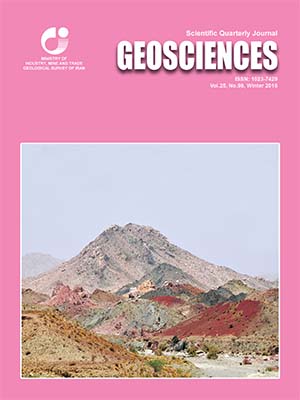Document Type : Original Research Paper
Authors
1 Ph. D., Isfahan Regional Water Company, Isfahan, Iran
2 Associate Professor, Department of Natural Geography, Faculty of Geographic Sciences and Planning, University of Isfahan, Isfahan, Iran
Abstract
This study has been carried out with the aim of mapping karst and evaluation of potential karstification of carbonates rocks in Zagros. One objective of this paper is a spatial evaluation of karst development in Zagros considering role of the chief factors affecting karst development. The main considered factors are those classified by White (1988) into three driving forces (i.e., chemical driving force, physical driving force and hydrogeological setting). Precipitation, temperature, relief, rock type, tectonic setting and stratigraphic thickness of soluble carbonate rocks are the main factors classified to describe the mentioned driving forces. In this study, precipitation and temperature are represented by the chemical weathering conditions during the modern and glacial periods prepared on the basis of Peltier's graphs. All data are mapped, classified, weighted and managed in separate layers in GIS environment. The Karst Index (Ki) is introduced to define the modeled degree of karstification computed by proper combination of six weighted layers and the final theoretical karst map of Iran is prepared based on the ranked Karst Index. According to the combination method, values of Ki could be in a range of zero to 400. The classified theoretical karst map shows that out of 109,313 km2 of carbonate units (25 % of the surface area of the study area) about 34212 km2 (31.3% of carbonate rocks) have very low to low potentials for development of karstic features. About 61272 km2 (56% of carbonate rocks) have moderate potential and about 13829 km2 (12.7% of carbonate rocks) have high to very high potentials for karstification. In other words, 68.7% of the carbonate rocks are carbonate rocks with moderate to high potentials for karstification. Densities of caves and karstic springs are the main and the most important geomorphological features used to check the calculated degree of karstification. For this purpose, complete inventories of caves and springs in Zagros were made. 64 caves and 129 springs (with discharges above 10 l/s) occur in rocks in areas of very low to low potentials for karstification. About 132 caves and 300 springs fall in the moderate class and 51 caves and 162 springs in areas with high to very high potentials for karstification. Cave densities are 0.0014, 0.0020, 0.0022, 0.0036 and 0.0039 caves per square kilometers for very low, low, moderate, high and very high classes respectively. In addition, densities of springs are 0.0035, 0.0039, 0.0049, 0.0111 and 0.0131 springs per square kilometers for very low, low, moderate, high and very high classes respectively. In other words, densities of caves and springs show a good correlation with the evaluated karstification.
Keywords

